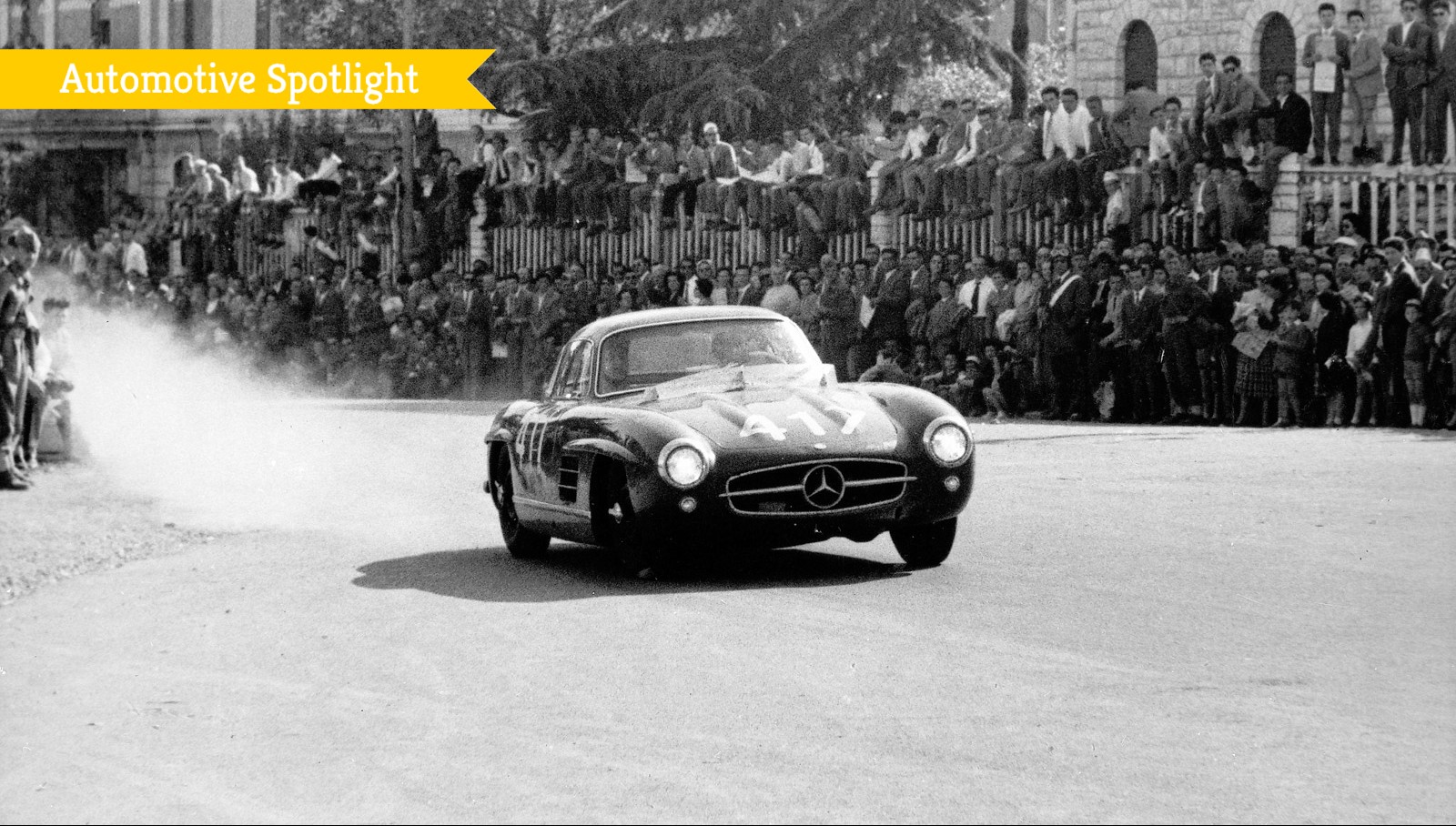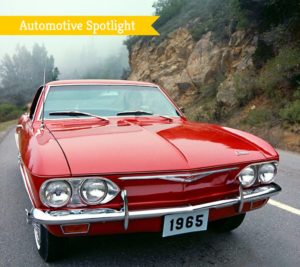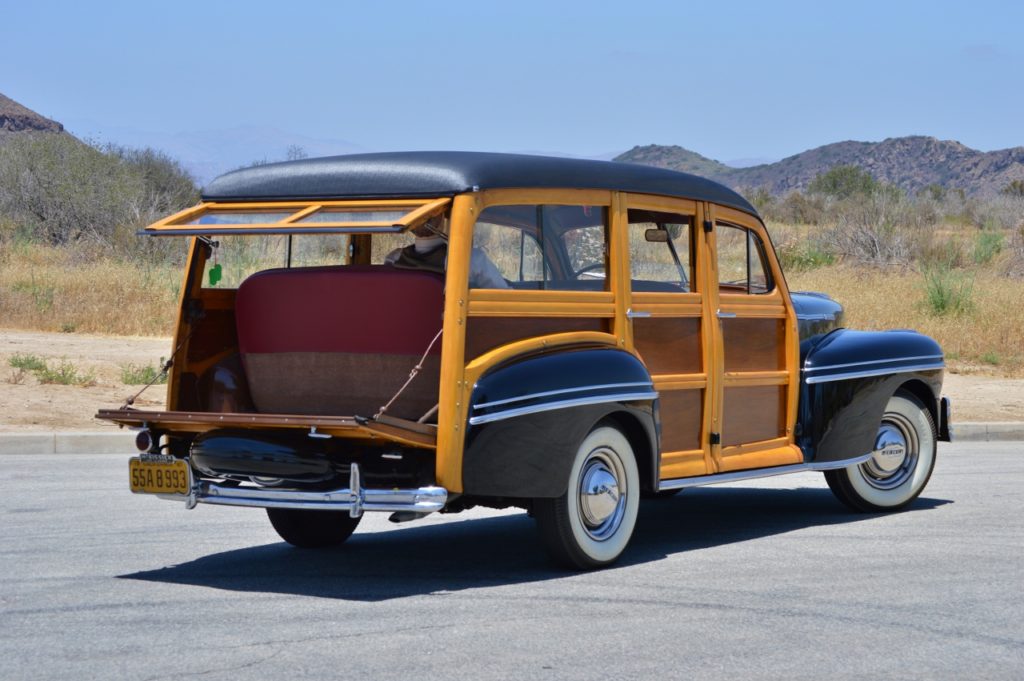
With the cessation of hostilities in 1945, soldiers began returning home to restart their lives. During this time, American stateside businesses that had dedicated themselves to wartime production throughout the past four years began enacting the necessary shift from military to civilian manufacturing. Particularly for automotive manufacturers, this was a challenging transformation since a car’s development typically takes a year or more to engineer and their assembly lines were not quickly reconfigured for automobiles. As such, most companies chose to fulfill these new consumer demands by releasing pre-war models with revised styling until fresh designs could be designed, tested, and assembled. The result was the niche era of car construction that comprised 1930s engineering married with a younger decade’s styling.
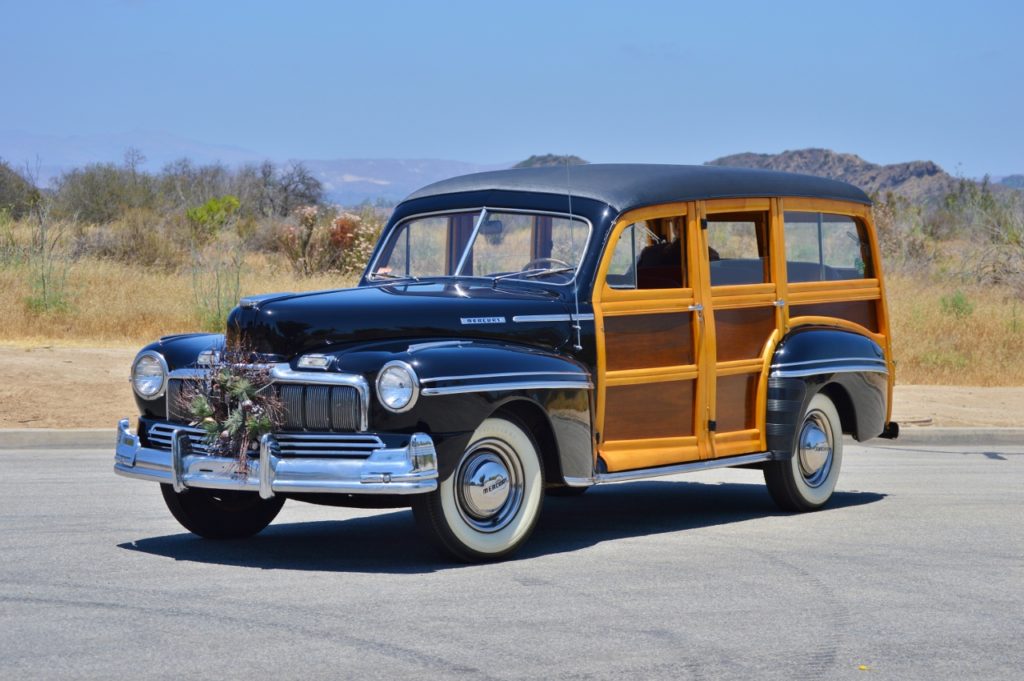
Ford was among the very first to begin issuing these newly styled cars out to dealerships in 1945. Closely following their launch was Ford’s mid-range subordinate, Mercury. By 1947, new models were set to release within the next two years, so Mercury polished up their pre-war products a bit further. After 1949, the car industry had returned to its robust pre-war production methods while the stylings and designs of the fifties took American car producers into their halcyon days. Two years ago we were charmed to auction a Mercury 79M Woody Wagon from 1947 which had been preserved in excellent condition. Below are some of the details that helped us set this Woody Wagon apart.
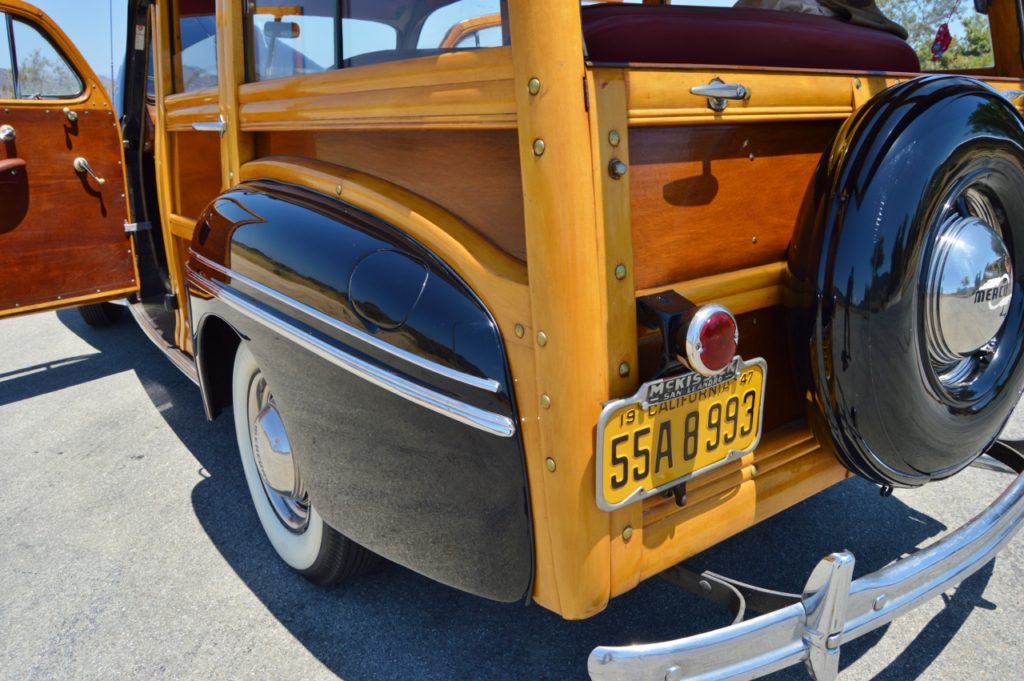
Predominately setting the Mercury apart from its Ford cousins was the front end styling. A wide-stretched Mercury emblem rested atop a thick, vertically slated and generously chromed radiator grille. Aside from the grille, chrome was heavily incorporated throughout the body. Additionally distinguishing the Mercury models was a side-mounted chrome emblem with the brand name engraved. Our example was colored in a standard gloss black paint that had recently been professionally applied and finished. Conjoined to the sheet metal was fiddleback maple wood paneling, which is responsible for the woody wagon epithet. Our seller confirmed to us that this lumber was original to the wagon and was covered in a fresh protective clear coat to ensure longevity. Furthermore, the exterior hardware and trim components were authentic although the vinyl roof underwent replacement as part of the restoration.
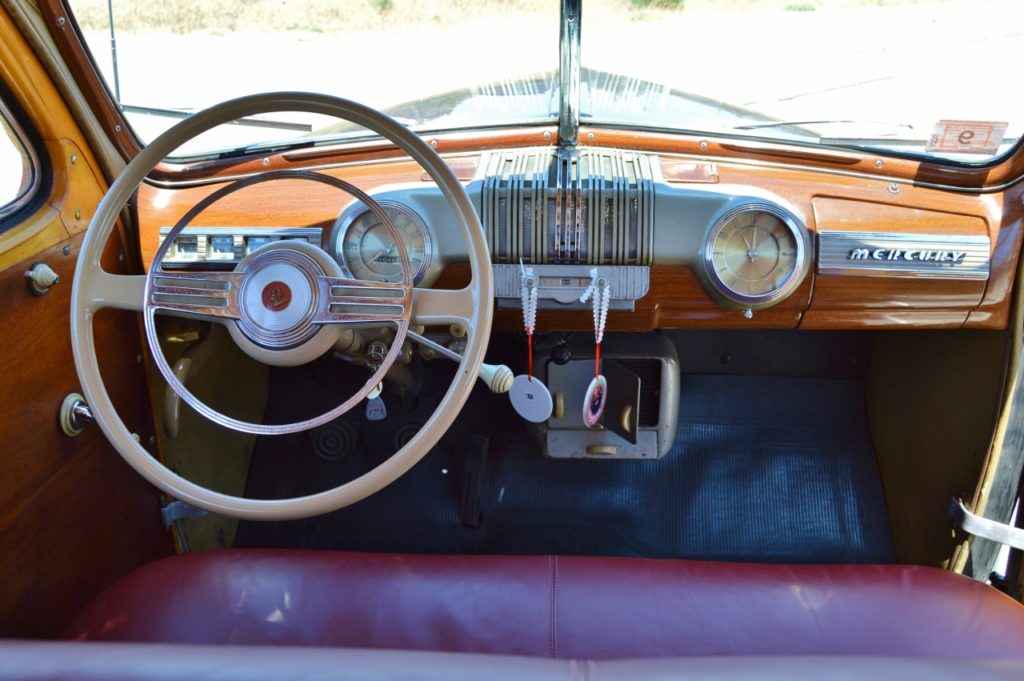
Inside the beast, the hand-laid wooden dashboard and door paneling exhibited itself in superb condition, with only slight indications of wear that was expectedly commensurate to its 81,000 mileage. Adorned with art-deco instrumentation, emblems, and Philco under dash radio, the Mercury was a genuine time capsule back to the war years. Passengers had three rows of red vinyl-covered benches to reside on, and our seller made an effort to have the front bench professionally reupholstered. Overhead, the roof was comprised of open slatted wood beams supporting its black vinyl covering. Above all else, the raison d’etre of the 79M was road trips. As such, a cargo area behind the third row of seating was accessible by a pleasantly uncommon horizontally split rear tailgate.
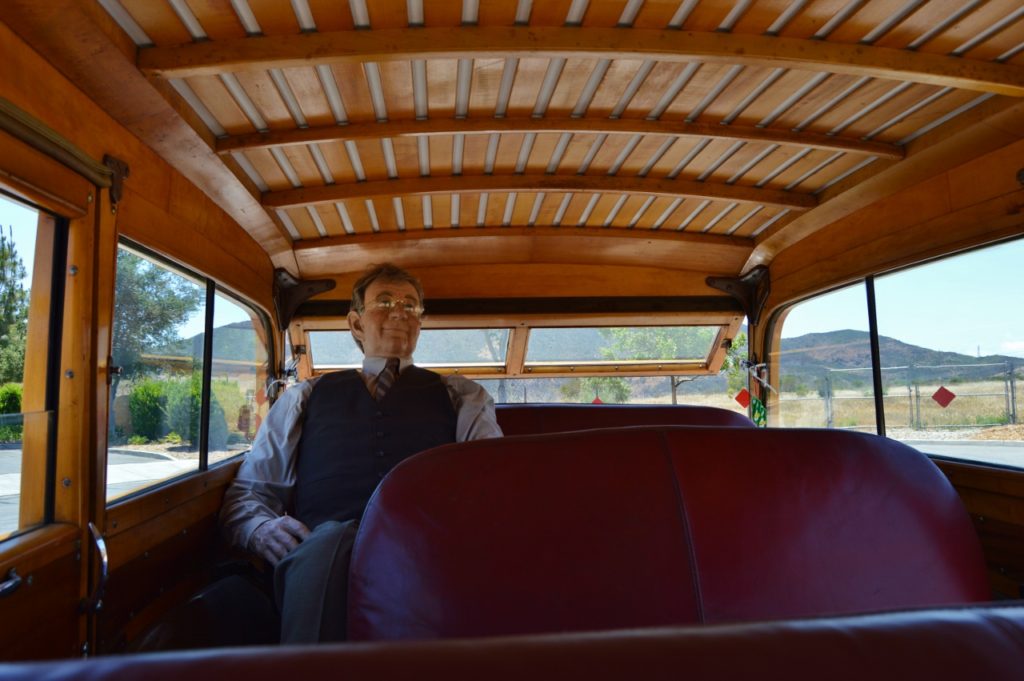
Rebuilt preceding to our seller’s ownership, the 238ci flathead V8 was also original to the Woody. Incipiently capable of approximately 100 horsepower, the water-cooled, blue-painted block sent power to the rear wheels through a three-speed manual transmission, and ours was outfitted with a highly-prized Columbia Overdrive unit. An underside inspection revealed some small areas of corrosion; however, the chassis and suspension were clean, straight, and in impeccable condition considering the car’s age drastically predates galvanization.
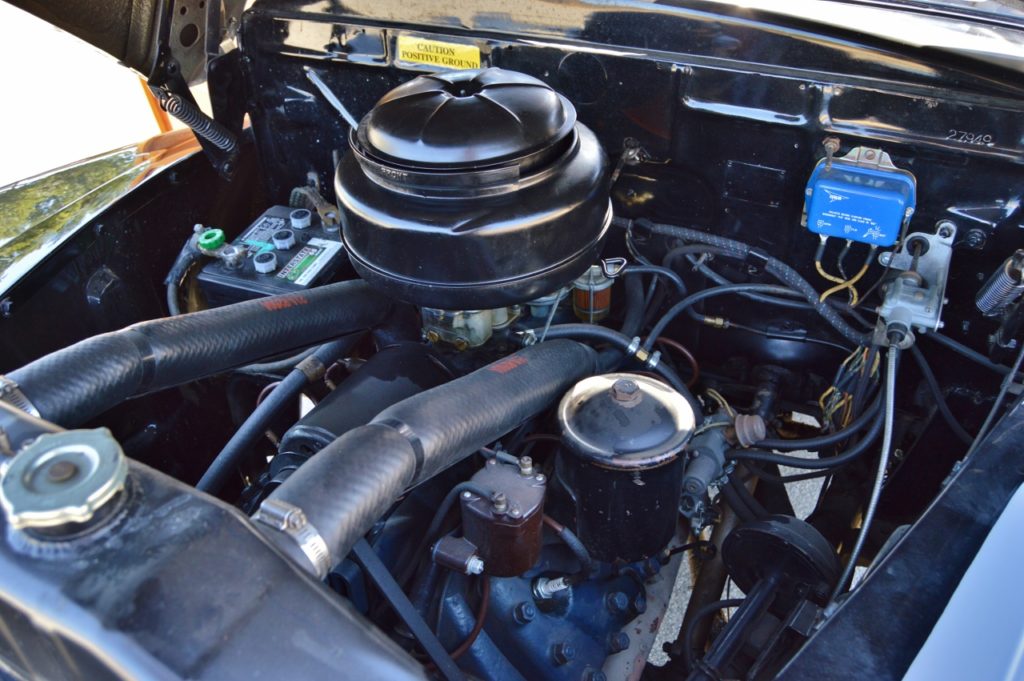
When Mercury was selling the 79M on showrooms, a wagon such as ours could be had for a modest $2,207. In total, 29,284 79M were manufactured during 1947 and of that batch, roughly 3,500 units were configured into wagons. This production paucity makes them far rarer, and therefore they often command higher market prices than other body variations. This Mercury had remained with its owner for ten years before they elected to offer it to a good home. As part of an extensive collection, the wagon was well-cared for and even participated in several Concours events with its original yellow Californian license plates.
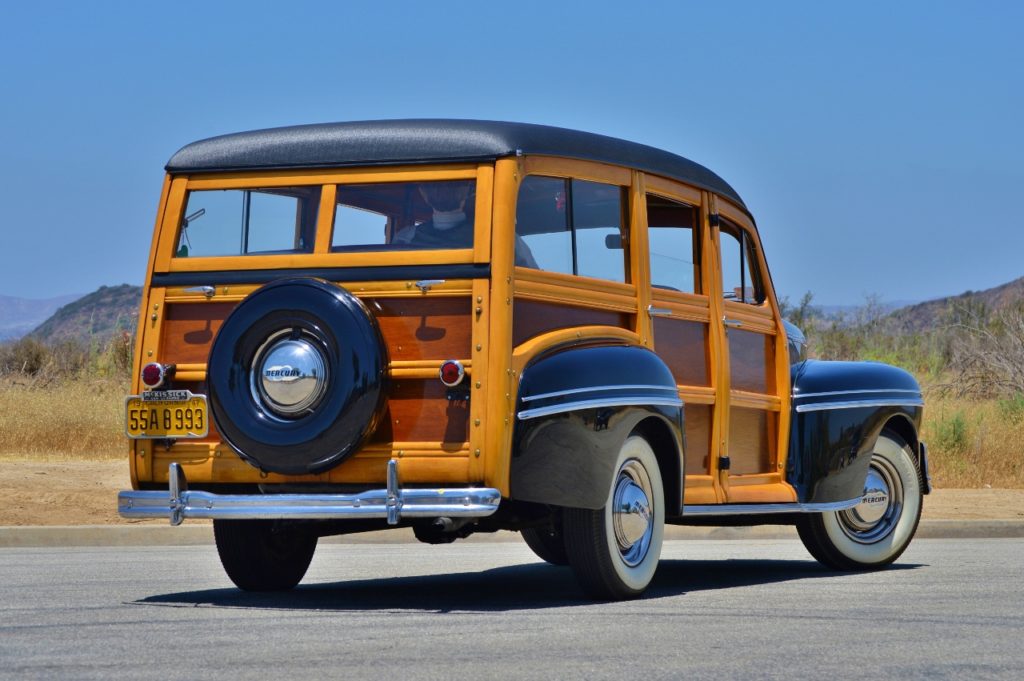
During a time when the world was rebuilding itself, even American companies were reeling from the impacts of war. It was through this exceptionally short time that some extraordinary automobiles embodying new and old eras were sold. Although our Mercury failed to sell at its auction, the final bid of over $65,000 wholly denotes the cherished value these post-war cars can have. It endures as one of the last times that wood, metal, and art deco artistry met together to captivate customers.
Swing on through this link to see the auction’s ending!

